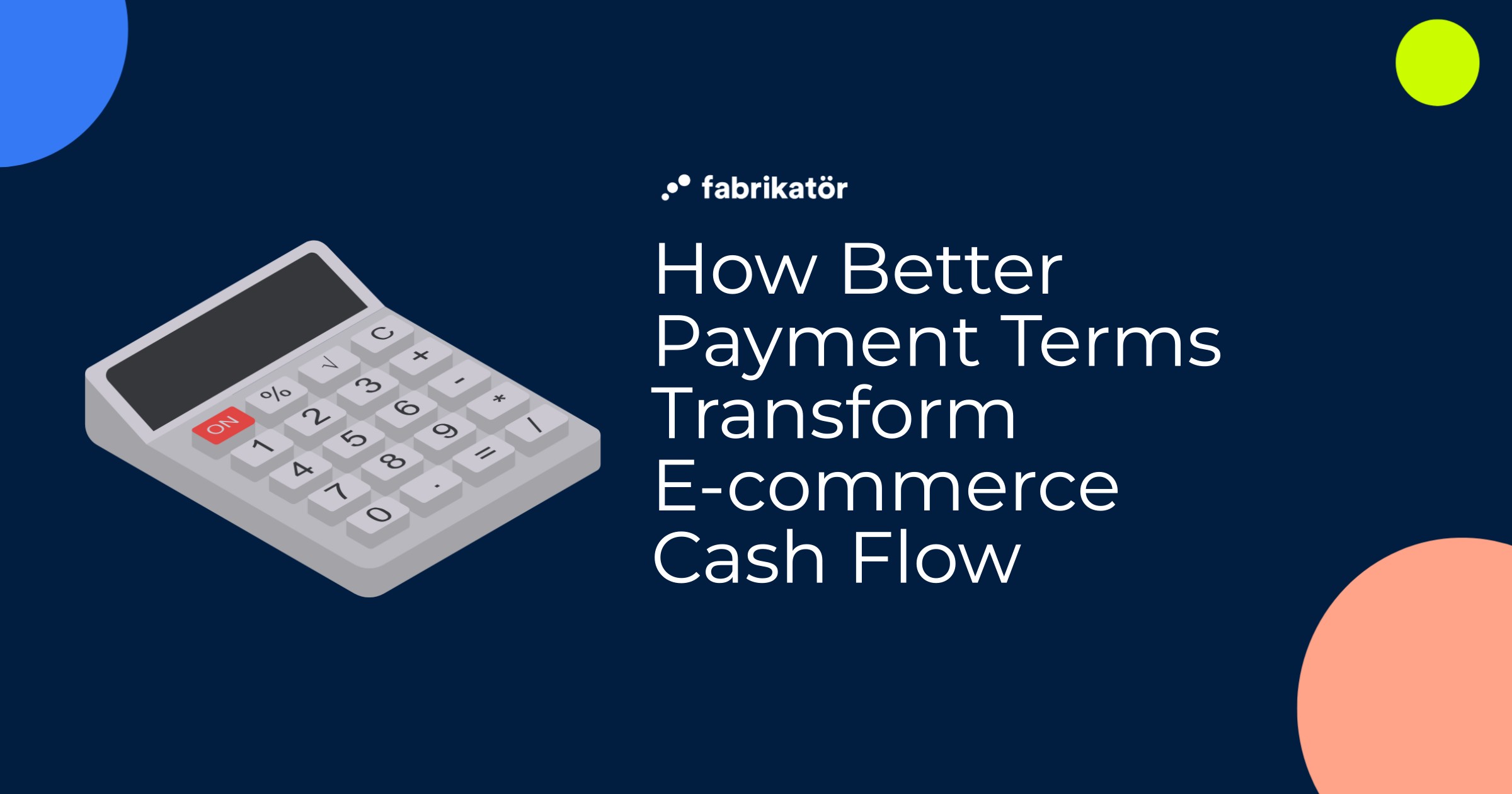Inventory Formulas for Efficient Inventory Management

In eCommerce, we use different formulas to determine important aspects of managing our inventory. This includes figuring out how much safety stock we need for each product, the right time to reorder items, and the cost of out of stock. It's crucial for eCommerce stores to regularly determine these numbers so they can make informed and data-based decisions about the efficiency of their business. Let’s start with understanding the meaning of an inventory formula.
What is an Inventory Formula?
An inventory formula is a mathematical tool used in eCommerce to understand and manage inventory effectively. It helps determine crucial aspects like safety stock levels, reorder points, and the costs associated with out of stock. These formulas provide valuable insights for businesses, allowing them to make informed decisions about inventory management strategies. By applying these formulas, eCommerce stores can optimize inventory levels, minimize stockouts, and enhance operational efficiency.
Let’s talk about the formulas you can use to boost your eCommerce store.
Inventory Formulas for Efficient Inventory Management
Reorder Point (ROP)

The Reorder Point (ROP) is the inventory level at which a new order should be placed to replenish stock before it runs out. It's calculated based on factors such as lead time, and demand variability. By maintaining the ROP, businesses ensure they have enough inventory to meet customer demand while avoiding stockouts.
📌 Where can you use it? You run an eCommerce store selling smartphones. Using the Reorder Point method, let's say you determine that when your stock of a particular smartphone model drops to 70 units, it's time to reorder from the supplier. This ensures you always have enough inventory to meet demand without running out.
📌 Now you can continue to gain profit even when you're out of stock. How? By accepting backorders. For more detail, you can read How Does Backorder Work? and Backorder Benefits for Your eCommerce Store.
Inventory Turnover Ratio (ITR)

The Inventory Turnover Ratio (ITR) is a financial metric used to measure how efficiently a company manages its inventory by assessing the number of times inventory is sold or replaced within a specific period, typically a year. It is calculated by dividing the cost of goods sold (COGS) by the average inventory value during the same period. A higher inventory turnover ratio indicates that inventory is selling quickly and efficiently, while a lower ratio suggests slower turnover and potentially excess inventory levels. The ITR helps businesses assess their inventory management practices and optimize their stocking strategies to improve profitability and operational efficiency.
📌 Where can you use it? An eCommerce store can use the Inventory Turnover Ratio (ITR) to understand how quickly they can turn over their existing stock. For example, if a product has a high ITR, it means that the product is selling rapidly, and the store can replenish inventory more quickly. On the other hand, a low ITR indicates that the product is selling slower than expected or there is excess inventory, signaling a need for improvements in inventory management.
ABC Analysis

ABC analysis is a technique used in inventory management to categorize items based on their importance. It classifies products into three categories: A, B, and C, according to their value and contribution to overall sales or profit. Category A items are the most valuable and typically represent a small percentage of total items but contribute significantly to revenue. Category B items have moderate importance, while Category C items are the least valuable, usually constituting a large part of total items but contributing minimally to revenue. This classification helps businesses prioritize their inventory management efforts, focusing on efficient control and allocation of resources to high-value items while minimizing costs for low-value items.
📌 Where can you use it? For example, let's consider an online electronics retailer. They sell various products, including smartphones, laptops, and accessories. To conduct an ABC Analysis, they calculate the annual usage value for each product by multiplying the annual demand (number of units sold per year) by the unit cost (price per unit) for each item. Then, they categorize the products based on their annual usage value into A, B, and C categories. This helps them prioritize inventory management efforts, such as ensuring sufficient stock levels for high-value items (A category) while minimizing excess inventory for low-value items (C category).
Gross Margin Return on Investment (GMROI)

Gross Margin Return on Investment (GMROI) is a metric used to measure how efficiently a retailer turns its inventory into profit. It calculates the relationship between the gross margin earned from sales and the average inventory investment. In simpler terms, GMROI tells you how much profit you're making for every dollar invested in inventory.
📌 Where can you use it? GMROI, utilized by eCommerce businesses such as TrendyClothes, helps evaluate inventory performance by comparing gross margin to inventory investment. For instance, TrendyClothes may calculate GMROI to identify which product categories yield the highest returns relative to inventory investment. This insight enables them to make informed decisions, adjust inventory levels, and focus on stocking items that generate the most profit.
Inventory Sell-through Rate
.jpeg)
Inventory sell-through rate measures how quickly inventory is sold within a specific timeframe usually expressed as a percentage. It indicates the efficiency of inventory management and sales performance. A higher sell-through rate suggests that products are selling quickly, while a lower rate may indicate slow-moving inventory.
📌 Where can you use it? For instance, a company like TechGadgets monitors sell-through rates for its electronics category. If the sell-through rate for smartphones is high while laptops lags, it suggests a need to adjust marketing or promotions for laptops to increase their sales velocity and optimize inventory turnover.
- We saw how important these formulas are for successful inventory management. However, for a growing eCommerce store, making these calculations manually may cause losing an important amount of time and so many errors, especially if you have a wide range of products. That's why having an automated inventory management tool like Fabrikatör can be incredibly beneficial!
Let Fabrikatör Handle Inventory Calculations for You!
Fabrikatör is an inventory management tool that you can use fully integrated with Shopify. With Fabrikatör, complex calculations turn into valuable insights and data with custom reports.👌 Fabrikatör's advanced interface effortlessly handles calculations for you. 🎉 There's no need to waste time on calculations when you can spend more time focusing on sales strategies instead. ⏳ Say goodbye to wasting time on manual number-crunching and hello to investing that time into your sales strategies and growing your business.
✨ In addition to simplified calculations, Fabrikatör brings numerous other benefits to the table. You can:
- Automate various inventory management tasks, including calculating reorder points, inventory costs, and more using efficient formulas. 🤖
- Save time by restocking inventory on time or creating purchase orders in seconds. ⏱️
- Monitor inventory, set growth goals, and create custom reports directly from the dashboard. 📊
- Utilize backorder and preorder features aligned with purchasing to turn inventory and out of stock products into profit. 💰
- Streamline inventory planning and control by effortlessly managing purchasing, demand forecasting, freight, and order management. 🚚
- Handle your supply chain operations efficiently by integrating your Shopify store with ShipHero, Klaviyo, and many more. 🛠️
Let Fabrikatör handle the calculations and other inventory management tasks while you focus on what truly matters. 🚀 Book a demo now for more information! 🚀










